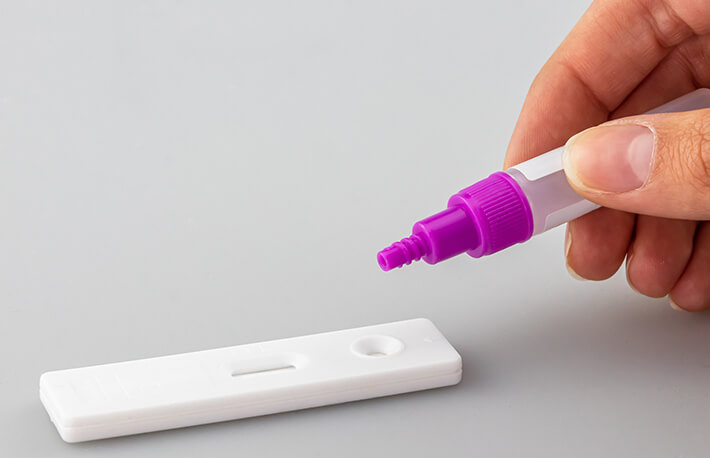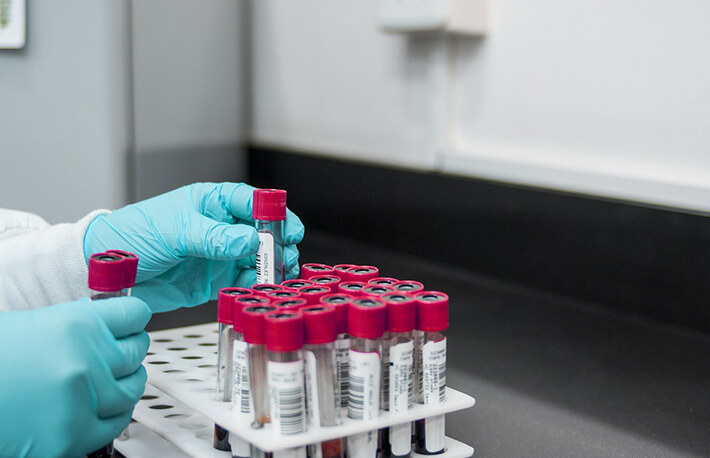
What Is PdG? Why Is PdG So Important During Pregnancy?
Progesterone plays a very important role in your menstruation cycle as well as early pregnancy. For couples who are trying to conceive, it is important that they track their progesterone level with the help of progesterone testing. So, you must be wondering what is PdG?
This is a reliable way of knowing that you have ovulated. However, it is not necessary to visit a doctor’s office to check your progesterone levels. You might have come across the term PdG, or you might not have.
If you have not, then the first thing that comes to your mind is, “What is PdG?”
What is PdG?
PdG is the abbreviated form of Pregnanediol Glucuronide. This is actually the urine metabolite of the progesterone hormone. Progesterone is produced in the ovaries after you are done ovulating.

After that, it circulates in the entire body through the bloodstream, metabolizes, and then releases in the urine as PdG. It is a good sign if the PdG levels are higher than the baseline. It means your body is producing a high level of progesterone.
If you consistently test your PdG level, you will have a good insight into whether you have ovulated or not. This is an essential element for getting pregnant.
Why is it important to take a progesterone test?
If you are having any problem getting pregnant, your doctor might suggest you go for a progesterone test to check for the amount of progesterone present in your blood.
This result can give them a proper indication if you are at all ovulating. This may allow for further diagnosis and management of possible fertility issues.
In case of pregnancy, your doctor might also suggest that you go for a progesterone test to check if you are at risk of ectopic pregnancy or miscarriage. Both of these may happen due to low or abnormal levels of progesterone during pregnancy.
An ectopic pregnancy is a scenario where the embryo plants itself outside of the uterus, usually in the cervix, fallopian tube, or abdominal cavity. Miscarriage is pregnancy loss or failed pregnancy.

With the help of this progesterone testing, the doctor would be able to figure out if your body is ovulating normally or not. If it is not ovulating normally, then they can provide you with some sort of advice and other treatment options that can actually help you to conceive.
Testing the progesterone levels is also helpful for women who are in the early stages of pregnancy because of its role in developing the uterus and the endometrium.
If you are someone who has gone through frequent miscarriages or is considering having a high-risk pregnancy, then your doctor might want to check the progesterone levels regularly to monitor the pregnancy’s health overall.
When should you take a progesterone test?
The accurate time to take a progesterone test is after 6-8 days of ovulation. This is the time when the progesterone levels are at their highest. If you are calculating on the basis of a 28-day cycle, that means you should try to take the test around day 21.

If you have ovulated, there would be a significant amount of rise in the level of progesterone, around this time. But, If you find no rise in the levels, then that could mean that you have not ovulated or you have miscalculated the dates.
If you have the tendency to keep taking the PdG test throughout your cycle, then you will notice a drop in the progesterone level during the end of the luteal phase. This is actually a sign that you have not conceived, and you are going to get your period soon.
However, in case implantation has occurred, the level of progesterone is going to stay high. This shows that the body is preparing your uterus for the upcoming pregnancy.
How can you test your progesterone levels?
There are various ways of testing the progesterone levels in your body. The first way is the more traditional one. Here, you have to take a serum progesterone test at the doctor’s office.
This includes your doctor taking a blood sample and then sending it to the lab to test for it. The procedure is risk-free and is relatively quick. However, the downside of this test is that it might take a few days to get the results back from the lab.

For those couples who want to check if ovulation has occurred, this might not be the test for them. It tells you the progesterone level from the time the sample was collected. This is not going to notify you if there have been any surges or fluctuations.
So, you can also go for the home PdG test kits and take the test at home. This type of testing does not read the level of progesterone in the blood. But it reads the level of PdG or pregnanediol glucuronide that is found in the urine.
This is not just more convenient, but it is a lot easier to track and test with time. It provides you with a more accurate insight into your fertility and ovulation patterns.
What Do The Test Results Mean?
In the test, the serum progesterone levels are measured in nanograms per deciliter.
Once the results are ready, the lab will send them directly to the doctor. The normal results may vary depending on a number of factors like age, sex, menstrual cycle, and whether or not you are pregnant,
If you are a menstruating adult, the progesterone levels in your blood are supposed to be low at the start of your menstrual cycle. It reaches its peak many days after you ovulate. Then, it is supposed to fall back to the lower levels unless you get pregnant.
Normal Test Results
If your body functions just how it is supposed to, the progesterone test report will show the following results:
- At the start of the menstrual cycle: 0.89 ng/ml or less
- During the middle of the menstrual cycle: 1.8 to 24 ng/ml
- In the first trimester of pregnancy: 11 to 44 ng/ml
- During the second trimester of pregnancy: 25 to 83 ng/ml
- During the third trimester of pregnancy: 58 to 214 ng/ml
- After menopause: 0.2 ng/ml or less
The range of reference may vary from one lab to the other. It depends on individual cycles and risk factors.
Abnormal Test Results
Your test results may be considered abnormal if they are anywhere outside the usual range. In certain cases, a single abnormal result of the test may reflect the normal fluctuations in the levels of your progesterone.
The levels of progesterone may fluctuate too much, sometimes in just the course of one day. In other instances, abnormally higher or lower levels of progesterone might signal an underlying health issue.
In addition to being pregnant, high levels of progesterone is also associated with:
- Adrenal cancer
- Ovarian cancer
- Congenital adrenal hyperplasia, a collection of disorders that affect the adrenal gland.
- Low levels of progesterone may have an association with:
- Failure to ovulate
- Lack of periods
- Miscarriage
- Ectopic pregnancy
- Feta death
How do you read the PdG results?

The test results might vary depending on the type of PdG test you are taking. Some of the tests show either negative or positive results after you are done taking the est. If the result comes to be positive, then you have more than 5ml/ug of PdG present in your urine.
This is a sign that you have ovulated. If your results are negative, that means your urine contains less than 5ml/ug of PdG. This indicates that you have not ovulated.
Things to consider while taking a progesterone test?

By now, you know “what is PdG.” So, there are certain things that you should keep in mind while taking a PdG fast. These are some of the factors that affect the result of the test.
Irregular cycles
If you have irregular menstrual cycles, the always recommended formula of taking the progesterone test around the 21st day might not apply to you. Instead, it would be beneficial for you to take the test more frequently throughout the entire cycle to check for signs and patterns of ovulation.
In this situation, taking at-home tests is best suited as it allows and increases the frequency and flexibility of testing. This is something that is not going to be achieved when you test at a doctor’s office.
Hormonal imbalance
Any kind of potential imbalance is going to affect the accuracy of the test results for progesterone and its ability to predict your ovulation. This happens because your body is producing too much of progesterone or estrogen. In this situation, it is difficult for ovulation to occur.
Thus, even if the progesterone test shows you have a high progesterone level in your blood test or have a high amount of PdG present in your urine, it is not necessary that you have ovulated. It could be because of a hormonal imbalance.
Conditions like endometriosis and PCOS
PCOS or polycystic ovarian syndrome and endometriosis are some of the medical conditions that affect the ability of the body to ovulate. If you have any of these conditions, it becomes quite difficult to predict your ovulation with progesterone testing.
If you think you have developed endometriosis or PCOS, consult your doctor immediately. Do not think you are the only one in this because you are not. There are numerous other women who deal with the same thing every day.
Risks Of Progesterone Tests
Every time you get blood drawn from your body, there are certain risks that will wait in line for you. For most people, these risks are pretty minor.
You will possibly just feel a little bit of pain when the needle gets inserted in the vein, and you might just bleed for a couple of minutes when the needle gets removed. There might be slight bruising in the area, too.
What can you try when your PdG levels are low?
By now, the concept of “what is PdG” is clear. But what if the level of PdG is low? It is best to take your test results to your doctor. They are the best people to let you know the next course of action.

If your test results indicate that you have ovulated successfully, then your doctor is going to run some other tests to figure out why you are not being able to conceive.
And if it does not show that you have ovulated, the thing is that there are various other treatment options available. If your PdG levels are low, you can change your diet or take some supplements to alter them.
But if you choose to take the medical road, which is always recommended, they might prescribe some progesterone supplements or some ovulation-inducing medication.
READ MORE:
Already have an account?
Sign In
Create your account
User added successfully. Log in








